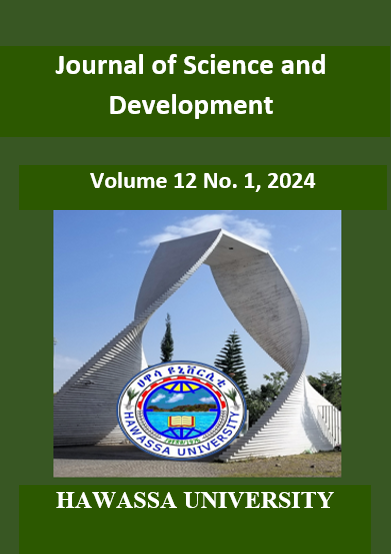Seasonal Variation of Chemical Composition and Invitro dry matter digestibility of forages in Eastern Zone of Tigray.
Keywords:
Acacia saligna, Crude Protein, Dodonaea viscosa, Lematse, nutritive valueAbstract
Seasonal feed shortage is one of the major constraints for livestock production in Ethiopia. This study evaluated the nutritive value of five cactus cultivars (Dekik, Korem, Lematse, Tsaeda, and Keyh) and other browse species (Acacia saligna, Eculea schimperi, Olea europea, Carisa edulis and Dodonaea viscosa) in Eastern Tigray, Ethiopia for their potential to address the constraint. These plants were chosen for their abundance and utilization as animal feed by local community. The plants were characterized in terms of chemical composition and nutritive values and compared by seasons. The cactus cultivars and browse species differed significantly in chemical composition and nutritive values. Among the browse species, D. viscosa had the highest crude protein (CP) content (17.73%) during the wet season and O. europea and C. edulis had the lowest. Eculea schimperi had the lowest in vitro dry matter digestibility (IVDMD) (44.23%) during the wet season and D. viscosa had the highest value with 70.47%. This plant also showed higher dry matter digestibility (DMD) (80.97%) and relative feed value (309.27) compared to the other browse species. Among cactus cultivars, the lowest CP content was recorded in Korem and Dekik in the dry season (7.8%), while the highest was recorded for Lematse in wet season (11.17%). The highest IVDMD was recorded in Keyh during the wet season (70.59%) while the lowest was in Tsaeda and Dekik in dry season (61%). In this study plant samples harvested in wet season showed higher CP, IVDMD, relative feed value and energy content than those samples harvested during the dry season. Plants harvested in the dry season showed higher fiber contents. The finding signaled that the cactus cultivars Lematse and Keyh and the browse species A. saligna and D. viscosa can be promoted as valuable feed resources for ruminants in the stud area. However, feeding trials are needed to affirm the results of this study further.
Downloads
Published
Issue
Section
License
Copyright (c) 2024 Genet Berhe, Teferi Aregawi, Amsalu Sisay

This work is licensed under a Creative Commons Attribution 4.0 International License.
The author(s) of the individual articles remain the copy right of their articles.

